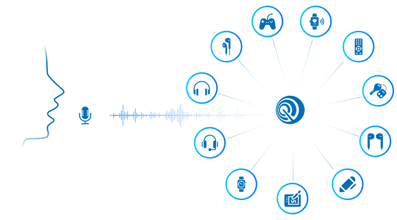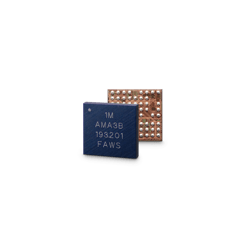December 28, 2020
Connected devices are becoming more intelligent, becoming more capable of making real-time decisions. Thanks to IoT technology advances, endpoints can process data right on the device itself without needing to send information to the cloud.
Edge computing provides real-time local data analysis to devices, which can range from digital billboards and autonomous vehicles, to mining equipment, wearable health and medical appliances, and more.
There are over 100 use cases across 11 sectors for endpoint AI, that could create a value of $250 billion in hardware, for edge and endpoint processing by 2025 according to McKinsey. The fast-growing need to power connected devices efficiency has driven a consumer surge for devices with edge computing.
The benefits of edge computing are clear. When IoT devices don’t have to go all the way to the cloud to handle processing, they can untether from cloud computing’s latency. And with low-power advancements in the microcontroller processor (MCU), it’s more practical and cost-effective for endpoint devices to recognize objects, faces, and speech without accessing the cloud.
This post will examine why edge computing has become preferred over cloud computing, discuss the future of endpoint AI, and breakdown the use cases for endpoint intelligence.
Leveraging cloud computing for your company’s needs can be more expensive than expected depending on the resources needed. Transferring the data to public cloud servers can also prove to be a problem for small-scale projects. You may also need to invest in additional bandwidth.
Latency can have a huge impact on cloud computing and distributed networks, making it challenging to deploy new hardware and software solutions. If it takes too long for a signal to travel from the user’s device to the cloud, it results in poor user experience.
With cloud processing, you are at the whim of a technical service provider. If the service provider is not available when you need them, your business can suffer data loss and experience downtime. The provider’s capacity and capability are just as important as their price point.
You need to have a plan for managing sensitive information and personal data in the cloud. If this data is shared with third parties or breached by cyber criminals, then more critical data, such as bank account information, or personal address, may also be at risk.
As IoT intersect with AI advancements and the rollout of 5G, more on-device intelligence has led to smaller, smarter, more capable, and cost-sensitive devices. With less reliance on the cloud or internet, these devices also benefit from greater reliability and privacy.
Today, endpoint intelligence can be delivered on microcontrollers designed securely from the ground up, allowing product manufacturer the ability to enhance digital signal processing (DSP), and on-device machine learning (ML) capabilities.
The most energy-efficient processing and connectivity solutions will enable AI endpoints at ultra-low power consumption, bringing the benefits of endpoint intelligence to billions of devices and people. Along with the increasingly low energy microcontrollers, AI and ML solutions are powering the next generation of IoT and embedded devices.
The use cases for low energy intelligence at the edge and endpoint processing are all around us. From voice recognition on our smartphones, to increasingly powerful wireless earbuds, or even smart glasses that support augmented reality, there are many examples of endpoint AI making our lives better.
The main use cases can be categorizes into three categories: visual recognition, voice recognition, and vibration sensing.
In most cases, intelligent endpoint for visual recognition can detect images and low-end objects. The use cases include visual inspection, counting, and sorting, along with visual identification and authentication. For example, some people scan their face to unlock their smartphones.
Other applications include image-processing smart doorbells that can determine a person’s identity. Low-cost image sensors can be deployed in buildings to sense if humans or pets are present, and they can be used to monitor cars in a garage. They can also be found in traffic cameras.
Besides voice recognition, endpoint devices like your smart assistant can also handle sound recognition and audio processing. These devices are always-on and listening for keywords or specific commands. More advanced devices can also process voice biometrics for user identification.

Other examples, where voice recognition can be seen in endpoints, are voice-enabled products such as home appliances, light switches, and thermostats. Increasingly, these products are becoming low power thanks to powerful microcontrollers. Since the introduction of Alexa Voice Service, any type of IoT connected device can be enabled with Alexa voice recognition whether it’s in a home, office, or hotel room.
Vibration sensing relies on sensors. Sensors can be used on a personal level, such as being placed in shoes to monitor someone’s walking style to detect diseases, or they can be used on a larger level, such as being placed on windows and doors of buildings.
However, this main use case is predictive maintenance, where IoT enabled devices can be mounted on machinery and industrial systems with magnets. These devices monitor vibrations through machine learning techniques to predict a system failure. Predictive maintenance solutions eliminate the need for networking and cloud configuration, and it can be deployed in only a few hours.

Ambiq’s ultra-low-power wireless MCUs and SoCs are accelerating edge inference in devices limited by size and power. Our products enable IoT companies to deliver solutions with a much longer battery life and more complex, faster, and advanced ML algorithms right at the endpoint. Built on our patented Subthreshold Power Optimized Technology (SPOT) platform, Ambiq’s products reduce the total system power consumption on the order of nanoamps for all battery-powered endpoint devices. Simply put, our solutions can enable intelligence everywhere. Article written by Charlene Wan
Back